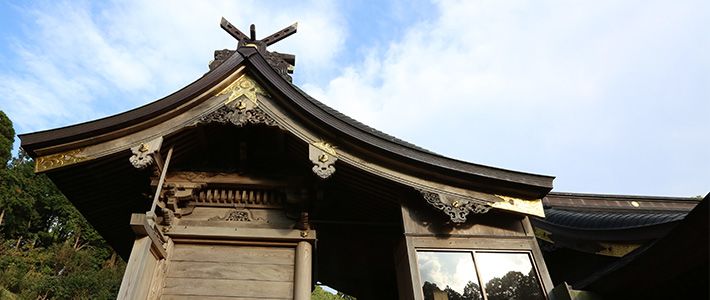
Insider’s Guide to Shintō Shrines
“Honden”: The Main Sanctuary Structure
Guideto Japan
Culture- English
- 日本語
- 简体字
- 繁體字
- Français
- Español
- العربية
- Русский
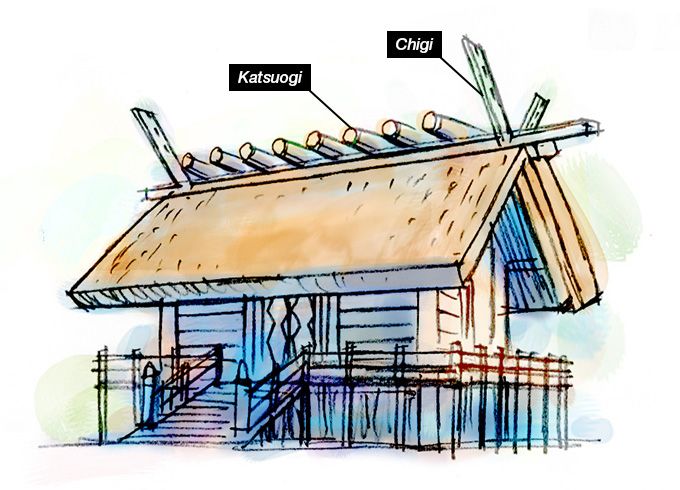
The honden, where the kami is enshrined, is the shrine’s central structure and its most sacred space. Honden architectural styles vary greatly, depending on the shrine’s divine lineage, but all are ultimately traced either to the taisha-zukuri style of Izumo Taisha Shrine or to the shinmei-zukuri style found at Ise Shrine. Taisha-zukuri is thought to reflect the style of ancient residential architecture, while shinmei-zukuri is modeled on the ancient Japanese granary.
In both cases, the roof of the honden displays the distinctive wooden ornaments known as chigi and katsuogi. The chigi are pairs of slender timbers, set at either end of the roof, that fork upward and outward from the ridge. The katsuogi are short logs laid perpendicularly across the ridge. There are numerous styles of honden in Japan today, but the most orthodox feature both chigi and katsuogi. These ornaments are probably the most distinguishing features of Shintō architecture.
The chigi and katsuogi are not merely decorative; they have a religious significance. The ends of the chigi may be cut horizontally (uchi-sogi) or vertically (soto-sogi). Horizontally aligned chigi indicate that a female deity is enshrined. At shrines with vertically aligned chigi, the kami is male.
In the case of katsuogi, the gender distinction is based on number: An even number of katsuogi signifies a female divinity, while an odd number signifies male. Accordingly, with very few exceptions, shrine buildings that display horizontally cut chigi will have an even number of katsuogi, while buildings with vertically cut chigi will have an odd number of katsuogi.
Many shrines have no honden, only a haiden (worship hall). Often this is because the kami worshipped at the haiden is a sacred mountain, tree, or other natural feature, as is the case at some of Japan’s oldest shrines. Notable examples are Ōmiwa Shrine on Mount Miwa (Nara Prefecture), Suwa Taisha on Mount Moriya (Nagano Prefecture), and Kanasana Shrine on Mount Mimuro (Saitama Prefecture).
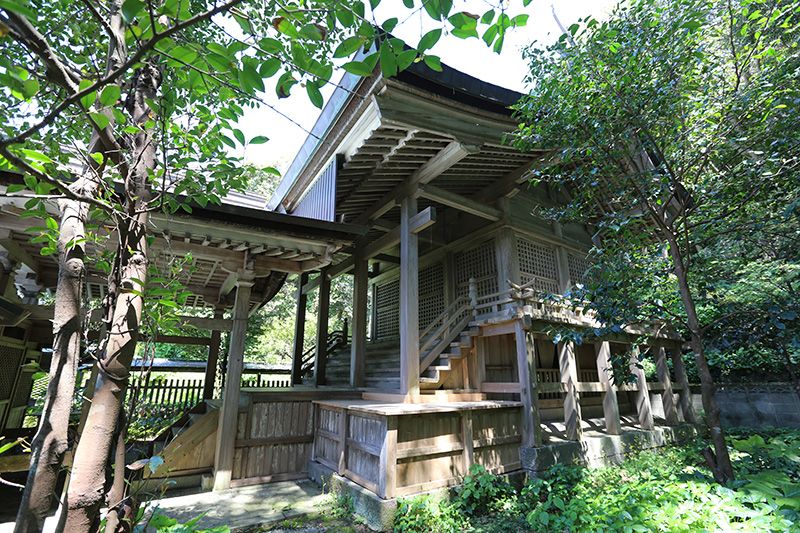 Tajima Shrine, Karatsu, Saga Prefecture
Tajima Shrine, Karatsu, Saga Prefecture
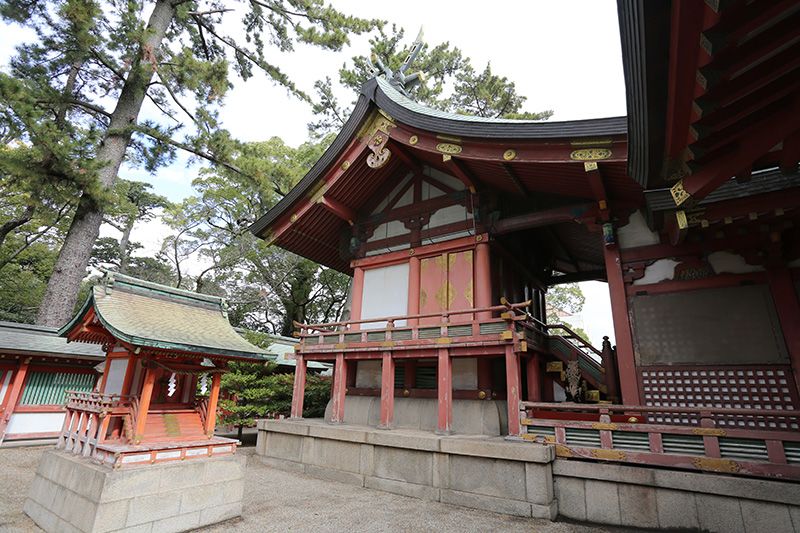 Nagata Shrine, Kobe, Hyōgo Prefecture
Nagata Shrine, Kobe, Hyōgo Prefecture
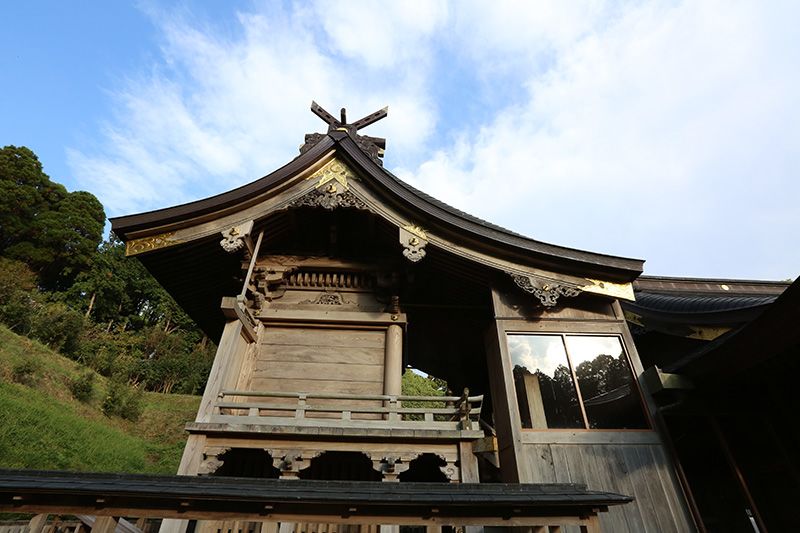 Tsuno Shrine, Miyazaki Prefecture
Tsuno Shrine, Miyazaki Prefecture
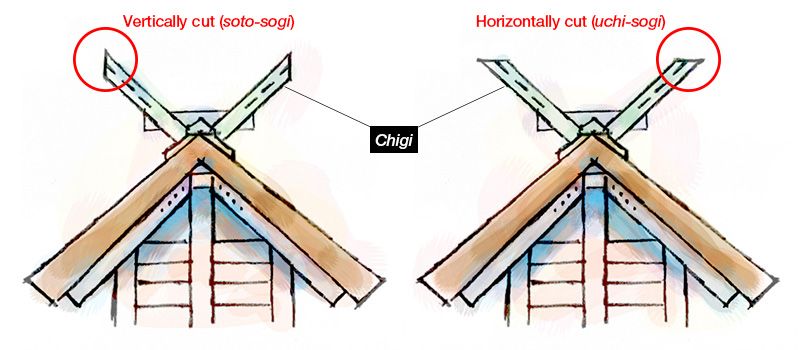
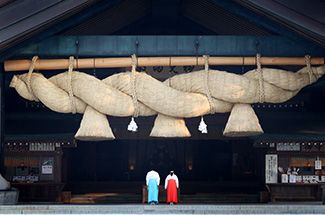 Your Virtual Guide to the Shintō Shrine
Your Virtual Guide to the Shintō Shrine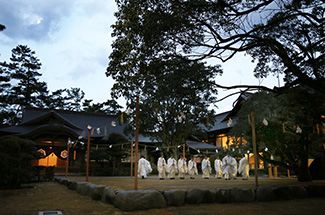 Izumo Taisha Shrine: The Ancient Meeting Place of the Gods (Photos)
Izumo Taisha Shrine: The Ancient Meeting Place of the Gods (Photos)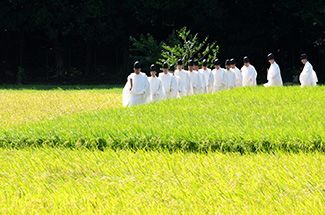 A Year in the Life of Ise Shrine (Photos)
A Year in the Life of Ise Shrine (Photos)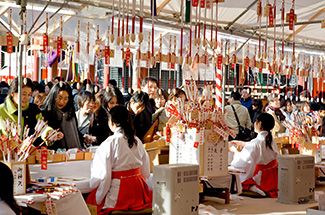 Japan’s Religious Ambivalence: The Shaping and Dismantling of a National Polity
Japan’s Religious Ambivalence: The Shaping and Dismantling of a National Polity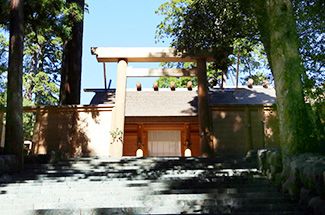 The Japanese World View: Three Keys to Understanding
The Japanese World View: Three Keys to Understanding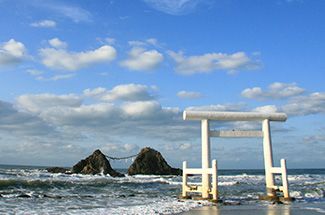 “Kami”: The Evolution of Japan’s Native Gods
“Kami”: The Evolution of Japan’s Native Gods